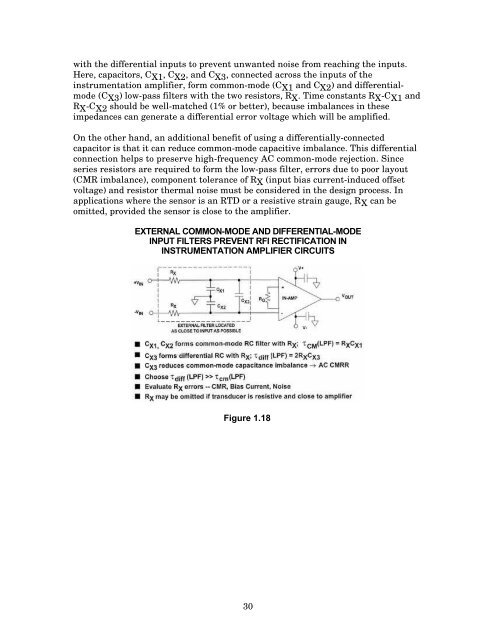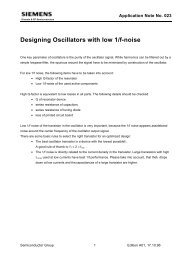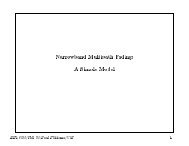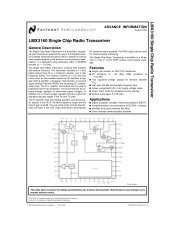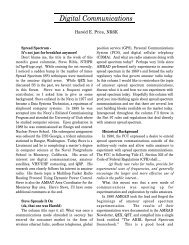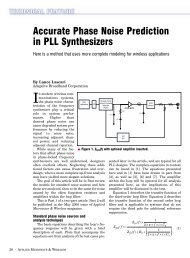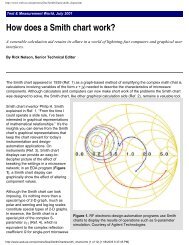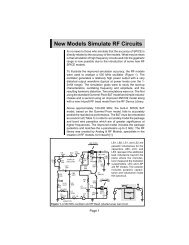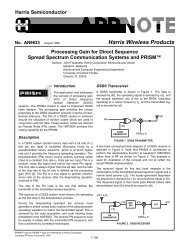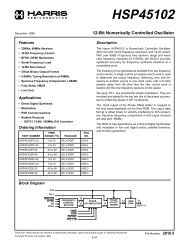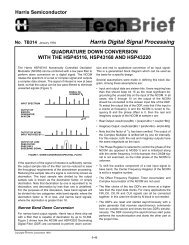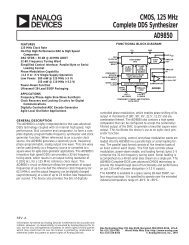SECTION 1 SINGLE-SUPPLY AMPLIFIERS - Analog Devices
SECTION 1 SINGLE-SUPPLY AMPLIFIERS - Analog Devices
SECTION 1 SINGLE-SUPPLY AMPLIFIERS - Analog Devices
- No tags were found...
Create successful ePaper yourself
Turn your PDF publications into a flip-book with our unique Google optimized e-Paper software.
with the differential inputs to prevent unwanted noise from reaching the inputs.Here, capacitors, C X1 , C X2 , and C X3 , connected across the inputs of theinstrumentation amplifier, form common-mode (C X1 and C X2 ) and differentialmode(C X3 ) low-pass filters with the two resistors, R X . Time constants R X -C X1 andR X -C X2 should be well-matched (1% or better), because imbalances in theseimpedances can generate a differential error voltage which will be amplified.On the other hand, an additional benefit of using a differentially-connectedcapacitor is that it can reduce common-mode capacitive imbalance. This differentialconnection helps to preserve high-frequency AC common-mode rejection. Sinceseries resistors are required to form the low-pass filter, errors due to poor layout(CMR imbalance), component tolerance of R X (input bias current-induced offsetvoltage) and resistor thermal noise must be considered in the design process. Inapplications where the sensor is an RTD or a resistive strain gauge, R X can beomitted, provided the sensor is close to the amplifier.EXTERNAL COMMON-MODE AND DIFFERENTIAL-MODEINPUT FILTERS PREVENT RFI RECTIFICATION ININSTRUMENTATION AMPLIFIER CIRCUITSFigure 1.1830


